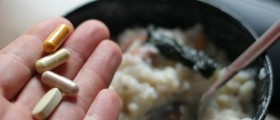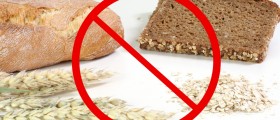
Lactose definitionLactose or milk sugar is composed of two sugar, glucose and galactose. It can be found in milk and milk products, but also in baked goods, ready meals, pizza or soup from the bag, various sauces, and even in medicines. After eating, lactose in the small intestine dissolves by the enzyme lactase, which is naturally found there. If person does have a sufficient amount of the enzyme lactase or doesn't have it at all, occurs disorder described as lactose intolerance.
When human body is not able to decompose the milk sugar in the small intestine, 15 minutes or an hour after consuming it, symptoms such as bloating, pain in the lower part of abdomen and diarrhea occur.
Causes
Mostly, people are genetically predisposed to be intolerant to lactose. Generally, these patients do not contain the enzyme lactase. For example, in Asia, between 80 and 90 percent of the population is genetically conditioned to lactose intolerance, while in Europe this rate is much lower, between 10 and 20%. In Germany, 12 million people have lactose intolerance. In Asia, the spread of this disease is more often. This means that there is the connection between the region and the tendency to the lactose intolerance. It is known that in the southern countries lactose intolerance is more common than in the north countries. In Asia, it is especially represented. All together indicates that such disease prevalence is genetically conditioned. There is no chance that genetically predisposed lactose intolerance may disappear .Primary lactose intolerance means that the amount of the enzyme lactase declines in most people with age. Thus, the greatest production of this enzyme is in infants in their first months, while in the next 5 years declines in the great amount. Adults have only the tenth part of the original enzyme activity. Because of that older people react on milk sugar worse than younger people.
In addition to the primary, there is a secondary lactose intolerance - transient lactase deficiency caused by small intestinal mucosa damage and reduction of its functional areas. It may occur due to the infections of the digestive tract caused by bacteria, viruses and Giardia lamblia. Also, it may be consequence of Celiac disease, transient protein intolerance, chronic bowel inflammation, blind loops syndrome and a short intestine. It is possible that symptoms of lactose intolerance disappear. If diseases of small intestine, such as celiac disease are treated, the small intestine mucous tissues recover, which may lead to re-creating the enzyme lactase and therefore continuing with use of foods containing milk sugar.
Transient lactose intolerance may occur in premature born babies. It is usually a consequence of the immature lactase activity, but also may be associated with malabsorption of other saccharides. It rarely requires treatment.
Lactose intolerance sometimes may occur as a result of gradual shutting down of the genes function that regulate the activity of the enzyme lactase. This intolerance occurs between the age of 1 and 18 , mostly between the age of 3 and 5.

















Your thoughts on this
Loading...